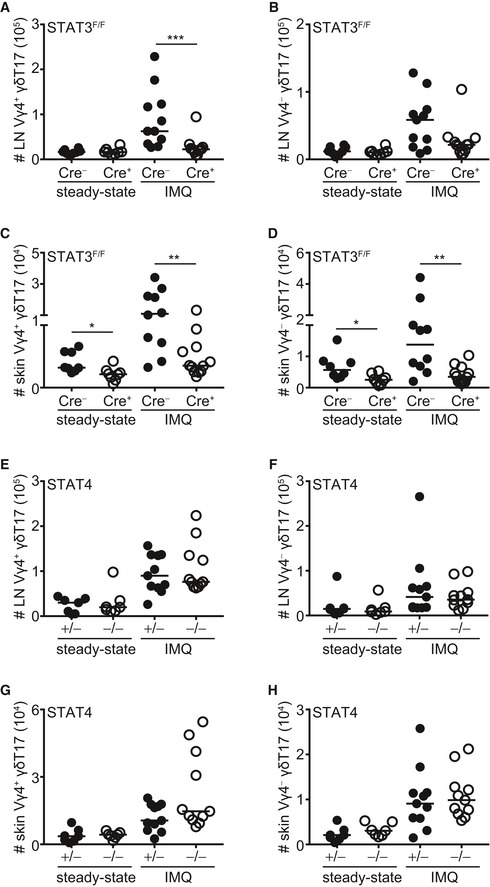Flow cytometric analysis of γδ T cells in RORγt
CRE‐STAT3
F/F (Cre
+) and littermate control mice (Cre
−) (A‐D) or in STAT4
−/− (−/−) and littermate control mice (+/−) (E‐H). In graphs, each symbol represents a mouse and line the median. *
P < 0.05, **
P < 0.01, ***
P < 0.001 using Mann–Whitney test.
-
A–H
(A, B and E, F) Numbers of Vγ4+ (A and E) and Vγ4− (B and F) γδT17 cells in the LN before (steady state) and after IMQ‐induced psoriasis in RORγtCRE‐STAT3F/F (A, B) or STAT4−/− (E, F) mice. Steady state: n = 7–8; 4 experiments, IMQ: n = 11–12; 4 experiments. (C, D and G, H) Numbers of Vγ4+ (C and G) and Vγ4− (D and H) γδT17 cells in the skin before (steady state) and after IMQ‐induced psoriasis in RORγtCRE‐STAT3F/F (C, D) or STAT4−/− (G, H) mice. Steady state: n = 7–8; 4 experiments, IMQ: n = 11–12; 4 experiments.

